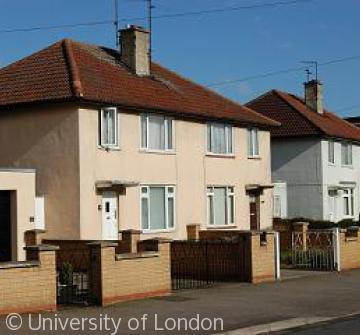Corby Urban District Council

In 1939 the Corby Urban District Council was established, separating from the Kettering Rural District Council and taking responsibility for housing provision in Corby, although there was little or no building activity during the war[1]. Following the end of the Second World War, Iron and Steel control, a department within the Ministry of Supply outlined the importance of the Stewarts and Lloyds plant achieving an output of 500,000 ingot tonnes per annum to aid national recovery[2]. With returning servicemen and the requirement of the Ministry of Supply for a substantial workforce at the steel plant, the Corby UDC was faced with a housing shortage. In a letter of 28th December 1945, the directors of Stewarts and Lloyds made it clear that in order to achieve these productivity targets, they would require housing for 400 families immediately and 400 more in 12 months time[3]. At this time some 500 steel workers were living in Prisoner of War Camps, one of which located to the south of Corby village on South Road. The Corby UDC responded to this urgent need for housing by increasing their program of compulsory land acquisition under Part V of the 1936 Housing Act. Importantly, land was acquired on the 15th February 1945 under the Corby (Forest Gate) Housing Confirmation Order[4]. This allowed the UDC to continue to exploit the plateau of land to the west and north-west of the Stewarts and Lloyds housing estates. In order to build houses in large quantity and in a short space of time and with building materials in short supply, a number of non-traditional housing designs were chosen for the first phase of UDC building. The first of these houses, 52 British Iron and Steel Federation (BISF) houses were erected in Southall Road and St John’s place to the south of the village following compulsory purchase of land on 19th June 1945[5] and were completed in July 1947[6]. However the UDC did not continue to develop the old village and the first major UDC estate was to the west of the Stewarts and Lloyds housing, focused on Studfall Avenue and Dovedale Road.
On the 7th January 1946, Stewarts and Lloyds announced that unless they received Government assurance within a fortnight that 800-1000 new houses would be constructed to serve their operation within the next two years, they would cancel their expansion plans[7]. In June of that year under the terms of the Corby (North-West) Housing Confirmation Order, the UDC purchased a large area of land to the north-west of Studfall Avenue, previously owned by Stewarts and Lloyds and Lord Brooke[8] and in July was granted permission to erect 1000 BISF houses for Stewarts and Lloyds operatives.
[1] Holford & Wright, Corby New Town, 6 [2] The National Archives (TNA): Public Record Office (PRO) AVIA 50/1 Ministry of Supply: Labour, Registered Files, Series 3, Stewarts and Lloyds, Corby: Housing Needs [3] TNA: PRO AVIA 50/1 [4] The National Archives (TNA): Public Record Office (PRO) HLG 23/21981 Ministry of Health: Legal Branch: Sealed Plans, Corby UDC. Forest Gate. Housing Confirmation Order [5] The National Archives (TNA): Public Record Office (PRO) HLG 23/23089 Ministry of Health: Legal Branch: Sealed Plans, Corby UDC. South Rd. Housing Confirmation Order 1945 [6] The National Archives (TNA): Public Record Office (PRO) HLG 104 Ministry of Health and successors: Planning and Redevelopment [7] TNA: PRO AVIA 50/1 [8] National Archives (TNA): Public Record Office (PRO) HLG 23/25377 Ministry of Health: Legal Branch: Sealed Plans Corby UDC. North West Housing Confirmation Order 1946
Content derived from research undertaken as part of the Victoria County History project

